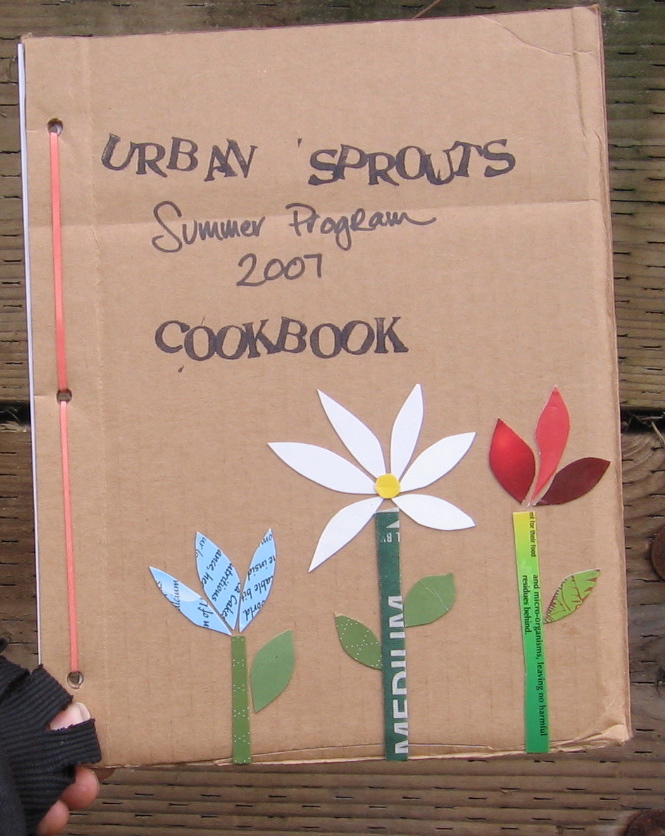These are the nutrition facts, from NutritionData.com, for a Starbucks Frappuccino, a popular beverage among the students in our June Jordan high school food class. This week we each kept a 24 hour food diary, and wrote down the nutrition facts for all the foods we ate. Then we totaled the following:
- Percentage of calories from fat—in a healthy diet, should be 30% or less.
- Total grams of sugar eaten in one day—should be less than 48g.
- How much of the daily recommended dietary fiber are we eating? Should total 100% Daily Value for one day.
Today we figured out how much physical activity it takes to burn the calories from one of these Starbucks drinks. You can choose: Garden for 50 minutes, go running for 20 minutes, or watch TV for 3 hours and 20 minutes!
The daily recommended physical activity for teenagers is 30 minutes of moderate excercise. "Moderate excercise" means getting your heart rate up to 70% of your maximum. We calculated this (140 bpm for a teen), took our pulses, and headed out to the garden. After digging beds for 20 minutes, we all checked our pulses, and we were there! Our hearts were beating hard and we felt great. Who needs a frappuccino when gardening feels so good!!
school garden
youth nutrition
physical activity
food labels
excercise









